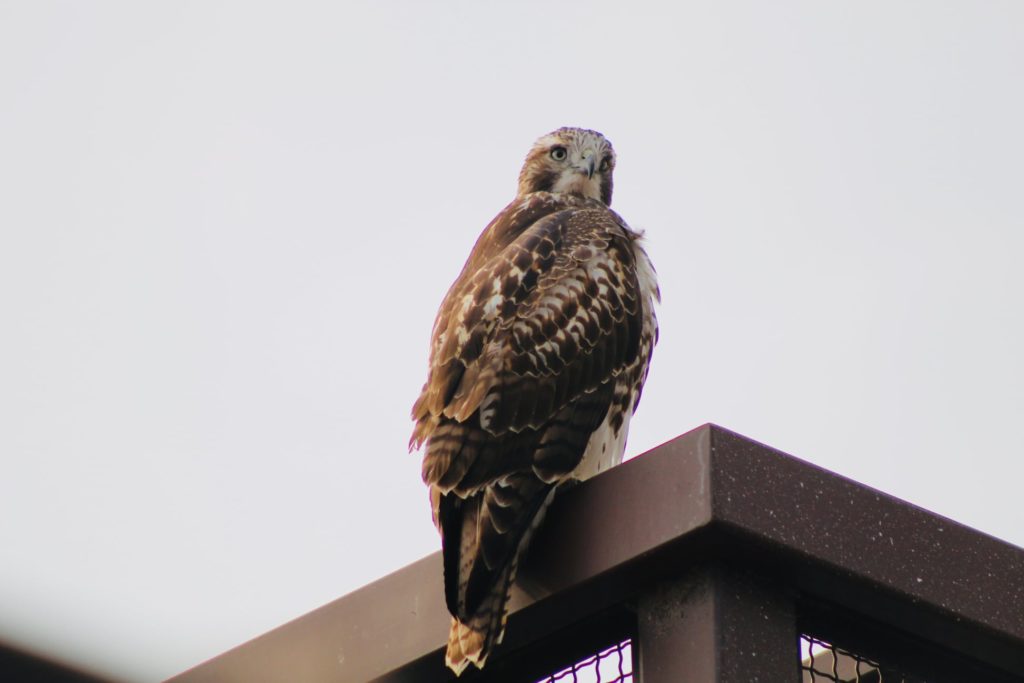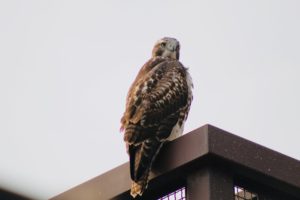Living in harmony with natural wildlife at Centerra

 Life here in Centerra is unique and special. It’s unlike living anywhere else in Loveland, Northern Colorado, or the state for that matter. It’s Certified Wild.
Life here in Centerra is unique and special. It’s unlike living anywhere else in Loveland, Northern Colorado, or the state for that matter. It’s Certified Wild.
Nature lovers flock to Centerra for the trails, lakes, open skies, mountain views, native flowers and natural wildlife. For us, living Certified Wild is more than just a catchphrase, it’s part of Centerra’s DNA – a 3,000-acre master-planned community that is designated as Colorado’s first and only National Wildlife Federation Certified Community Wildlife Habitat.
This is a certification that’s not taken lightly and offers easy access to miles of trails, open space, botanic gardens, wetlands and natural habitat for both residents and wildlife to enjoy year-round. Just to the west is Rocky Mountain National Park, one of the country’s most pristine wilderness areas full of hiking, fishing, camping and nature watching.
However, living in such a treasure comes with the responsibility of preserving it and protecting it for future generations. A space such as this, in such close proximity to wildlife and nature, must be carefully cared for.
One of the best ways to keep the intricate ecosystem of Centerra buzzing in harmony is to leave it as it is. When possible, just observe and don’t interfere – leave only your footsteps. To help keep our community thriving for all who call Centerra home, we’d like to share thoughtful insight into how to best live in harmony with wildlife in our community so everyone thrives.
Recommendations for pest control
There are times when we may interfere with the natural world without even knowing it. One instance of this is pest control. Jim Tolstrup, executive director for High Plains Environmental Center (HPEC), would like residents to know that rodenticides do not just affect rodents. When you put poison out to get rid of a mouse in your house, it can just as easily harm other animals, including natural predators, pets and humans if you don’t handle prevention carefully.
In developed areas, natural predators, such as owls, hawks and coyotes, can be exposed to rodenticides through secondary poisoning. This occurs when the predator eats an animal that consumed the rodenticide.
“Most rodenticides take several days (sometimes over a week) to kill the rodent, so these prey animals are available to predators after they have consumed the poisoned bait. We urge residents and businesses to forgo the use of all rodenticides if at all possible, because of this risk to wildlife.”
If you have tried every other non-pesticide option, including working with a pest control company, it may be necessary to temporarily use a rodenticide. If this is the case, HPEC recommends rodenticides that are not anticoagulants. Anticoagulant is a technical term for poisons that work by interfering with the blood clotting process, which causes the poisoned animal to die from massive internal bleeding if consumed.
If your pest control company has tried other options with little success, you can request that they use a non-anticoagulant rodenticide like zinc phosphide or bromethalin. These should be used as a short-term strategy to support long-term non-rodenticide solutions. We recommend only using rodenticides inside a building rather than outside if at all possible. This helps keep poisoned rodents out of reach of predators. Of course, you will need to keep a close eye on pets and children regardless of where you place the rodenticide.
No poison, now what?
Tolstrup and the HPEC team recommend residents and businesses refrain from using rodenticides if possible to help preserve Centerra’s precious wildlife. So, if you can’t poison those pests, how should you get rid of them?
Fortunately, there are some ways to eliminate those unwanted guests that migrate inside during colder months without hurting other animals as well. One option is using a wide variety of traps sold at local stores. These traps, along with removing any attractive food source or habitat, can be effective in reducing the local population of rodent pests. A pest control company should also be able to do all of this if you prefer not to do it yourself.
HPEC also uses and recommends local service vendor Affordable Pest Control because they understand and respect the concerns for wildlife. However, you should be able to request any pest control company to refrain from using rodenticide. If a company insists on using rodenticide without trying other strategies first, we recommend you look for another company that is more environmentally friendly.
Other threats to consider
While poison may be a serious threat to animals, there are other things that we do all the time that impact nature without even knowing it.
Scott Rashid, director of the Colorado Avian Research and Rehabilitation Institute, notes humans can pose a threat to birds and other wildlife by living in close proximity to Centerra.
Rashid says that one of the major threats to smaller animals and birds, nesting or otherwise, is cats. It’s also good to keep dogs on leashes when out and about walking.
“Keep cats inside,” Rashid said. “Cats kill indiscriminately. They react to movement.”
He also notes that birdbaths and bird feeders should be kept clean. Often birds are negatively impacted by these features if they are not regularly maintained.
“In Centerra, humans are a significant part of our ecosystem. By developing open spaces for homes and businesses, we have reduced the habitat available for predators. This generally results in more prey animals, including rodents,” Tolstrup said. “Wild predators are very effective at controlling rodent populations, so one of the easiest ways to address a rodent issue is to encourage more wild predators to live with us in our community.”
We are not just Certified Wild, you are too and that is so much more than open spaces, gardens and wildlife – it’s our personal decisions that can directly impact beautiful wildlife in a negative way. So, please follow best practices, don’t use poison, keep cats inside, birdbaths and feeders clean, and animals leashed.
More about High Plains Environmental Center
HPEC has played an integral role in the Centerra community since 2001. The idea for the education center was originally conceived by Tom Hoyt, president of McStain Neighborhoods and builder of High Plains Village at Centerra.
Tolstrup joined the team in 2007 and oversees everything from HPEC’s land management program to maintaining native plant botanic gardens to day-to-day administrative tasks of managing a non-profit.
HPEC’s influence goes beyond simply attracting people to Centerra. They help develop, educate, and maintain a healthy balance of living for all.
Tolstrup played a key role in getting Centerra designated as Colorado’s first Certified Community Wildlife Habitat in 2018 and knows the environment landscape like the back of his hand after working closely with Centerra’s master-developer McWhinney for more than 13 years. Tolstrup cares deeply about the outdoors, plants, birds and wildlife, making his position at HPEC the perfect fit to share tips on how to live in harmony with it.
We thank all residents and businesses in advance for considering this advice. Being Certified Wild is a conscious commitment we take seriously and we need every community member’s help to keep our natural community protected and thriving for centuries to come so beautiful species continue to return to Centerra year after year.


